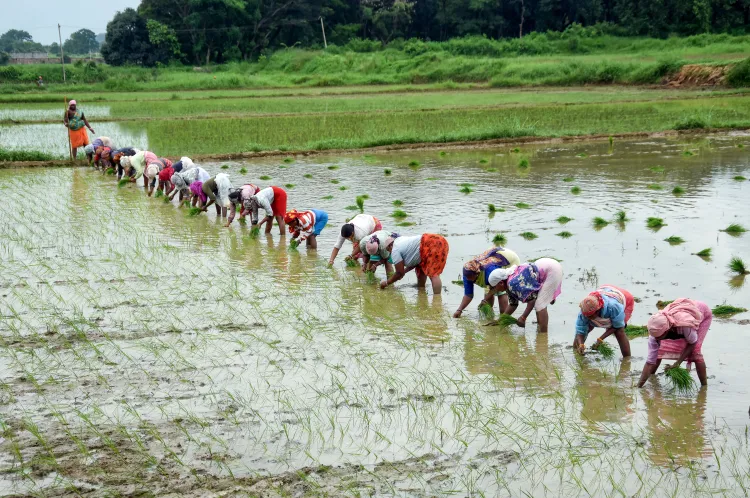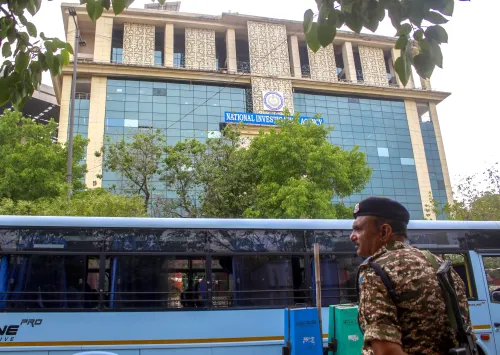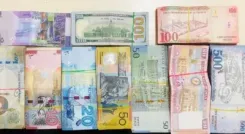Is Kharif Sowing Set to Surge by 4%? Agriculture GVA May Rise by 4.5%: A Comprehensive Report

Synopsis
Key Takeaways
- 4.5% growth in agricultural GVA projected for Q1 FY26.
- 76% of normal sown area completed for kharif crops.
- Rice sowing increased by 13.4% year-on-year.
- Favorable monsoon conditions support crop growth.
- Overall GVA growth expected at 3.5-4% in FY2026.
New Delhi, Aug 2 (NationPress) According to a recent report, the Gross Value Added (GVA) in the agricultural sector is anticipated to rise by 4.5 percent in the first quarter of FY26, with kharif sowing expected to surpass last year's figures by 4 percent, thanks to favorable monsoon conditions.
With the support of a beneficial monsoon, kharif sowing has been accomplished on 76 percent of the standard sown area, marking a 4 percent increase compared to last year as of July, as reported by the credit rating agency ICRA.
The increase in the sown area is primarily driven by rice, which saw a 13.4 percent year-on-year rise, as well as pulses, which grew by 3.5 percent, especially moong. Coarse cereals, particularly maize, also contributed to a 3.7 percent rise, with sowing reaching 108 percent of the normal area due to heightened demand for biofuels.
The report projects that agricultural GVA will grow by 4.5 percent in Q1 FY26 and between 3.5-4 percent for FY26, driven by robust output growth in rabi and most summer crops during AY2024-25.
Assuming a strong kharif output, the report anticipates that the GVA growth for agriculture, forestry, and fishing will be around 3.5-4 percent in FY2026.
Kharif crops, including rice, maize, bajra, jowar, soybean, cotton, and various pulses, are planted during the monsoon season, while summer crops like moong, urad, and several vegetables thrive from March to June.
The India Meteorological Department (IMD) predicts above-normal rainfall for August-September 2025, along with a neutral El Nino, which bodes well for kharif crop sowing.
In July 2025, all-India rainfall reached 105 percent of the Long Period Average (LPA), though it fell short of the IMD's forecast. Based on similar predictions for August to September 2025, total rainfall for the entire season is expected to exceed 106 percent of LPA.









